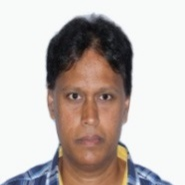
Isaac Dialsingh
Work place: Department of Mathematics and Statistics, The University of the West Indies, Trinidad and Tobago
E-mail: isaac.dialsingh@sta.uwi.edu
Website:
Research Interests: Mathematics
Biography
Isaac Dialsingh received a B.Sc. degrees in Mathematics and an M.Sc. in Statistics from the University of the West Indies St Augustine Campus in Trinidad and Tobago. He has a PhD in Statistics and is currently a Lecturer in Mathematics at the University of the West Indies.
Author Articles
On the Performance of Classification Techniques with Pixel Removal Applied to Digit Recognition
By Jozette V. Roberts Isaac Dialsingh
DOI: https://doi.org/10.5815/ijisa.2016.08.05, Pub. Date: 8 Aug. 2016
The successive loss of the outermost pixel values or frames in the digital representation of handwritten digits is postulated to have an increasing impact on the degree of accuracy of categorizations of these digits. This removal of frames is referred to as trimming. The first few frames do not contain significant amounts of information and the impact on accuracy should be negligible. As more frames are trimmed, the impact becomes more significant on the ability of each classification model to correctly identify digits.
This study focuses on the effects of the trimming of frames of pixels, on the ability of the Recursive Partitioning and Classification Trees method, the Naive Bayes method, the k-Nearest Neighbor method and the Support Vector Machine method in the categorization of handwritten digits.
The results from the application of the k-Nearest Neighbour and Recursive Partitioning and Classification Trees methods exemplified the white noise effect in the trimming of the first few frames whilst the Naive Bayes and the Support Vector Machine did not. With respect to time all models saw a relative decrease in time from the initial dataset. The k-Nearest Neighbour method had the greatest decreases whilst the Support Vector Machine had significantly fluctuating times.
Other Articles
Subscribe to receive issue release notifications and newsletters from MECS Press journals